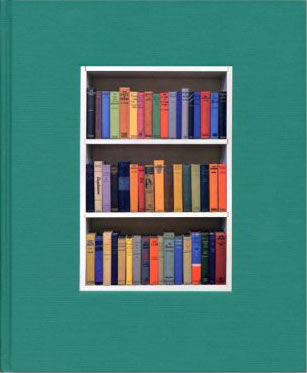Review: New and Used by Marc Joseph

Despite the fact that the vast majority of people have long moved into the digital age - buying their music online - records are not only still be sold, but even made. Sold mostly in independent record shops, record shops are now frequented by aging vinyl enthusiasts (for whom CDs or - gasp!- mp3s are just the work of the devil) and young hipsters (for whom owning something as ancient as a record player has now become kind of “cool”). In a somewhat similar fashion, second-hand book shops are still around (even though it hasn’t become “hip” or “cool” again to read - and it probably never will).
There is a whole subculture centered on those kinds of shops, and it is the focus of Marc Josephs’s New and Used. I can’t pretend I am impartial to that scene. I love going to second-hand book shops - in part purely for the visuals (sometimes, that visual appeal is a bit offset by the smell, I’ll admit - true book collectors might take that as a sign that I am not a dedicated book junkie), in part because I love looking at old paperbacks. I also like going to independent record stores, even though I was never a vinyl junkie: I’ve always been bothered by the fact that records, well, hiss and pop. If I want hissing and popping I’ll watch the white noise on TV. Oh, and I was always bothered by the fact that listening to records requires you to get up every twenty or thirty minutes to flip them over. If I want to exercise I’ll ride my bike. Of course, records sound better than CDs or mp3s, except that they don’t (boy, is this going to get me in trouble with hard-core record people).
New and Used presents this scene via photography of record and book shops and via short fiction, prose, poems and personal essays by various writers (among them Thurston Moore, of Sonic Youth fame, an avid record collector). It’s hard to imagine a similar book being made about mp3’s - who’d write a poem about mp3’s? - and therein lies the main appeal of the book. Regardless of whether you “get” what listening to records or reading old books (or collecting them) is all about, the culture itself is made accessible through this book. Given my (maybe not so) slight bias of course I like it, especially since it puts way more focus on words than most standard photography books. You’re not going to buy the book just for the photos - of course, you can, but then you’d be ignoring about half of its contents. Maybe it’s only consequential that a book about this topic contains a lot of writing (if the book hadn’t been out for a while I’d suggest a limited edition with a unique 45” single).
I could be mistaken, but somehow New and Used seemed to be flying a bit underneath most people’s radar when it came out three years ago. It’s a book you can spend some time with, with beautiful photography and a lot of smart writing, and it deserves more attention.